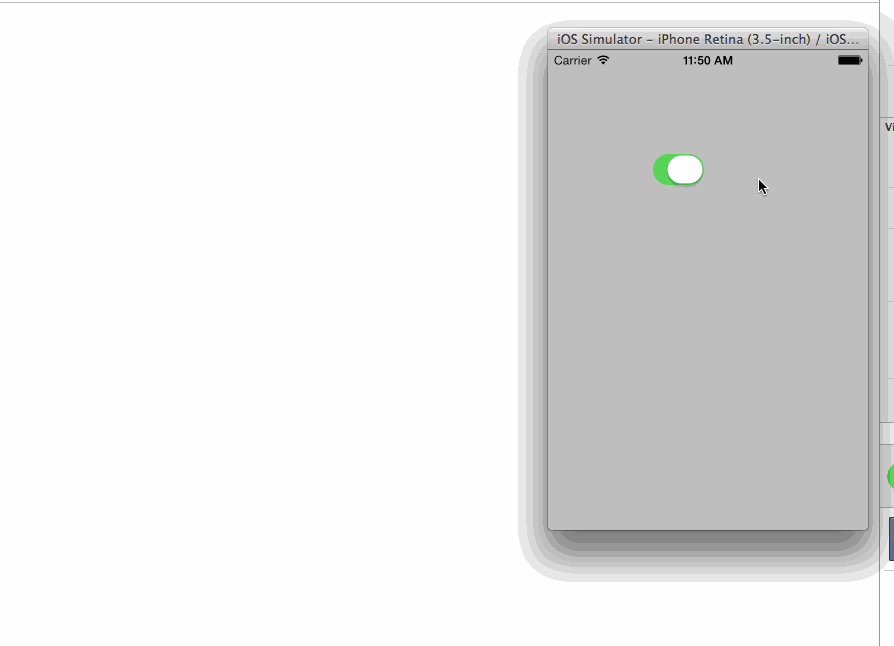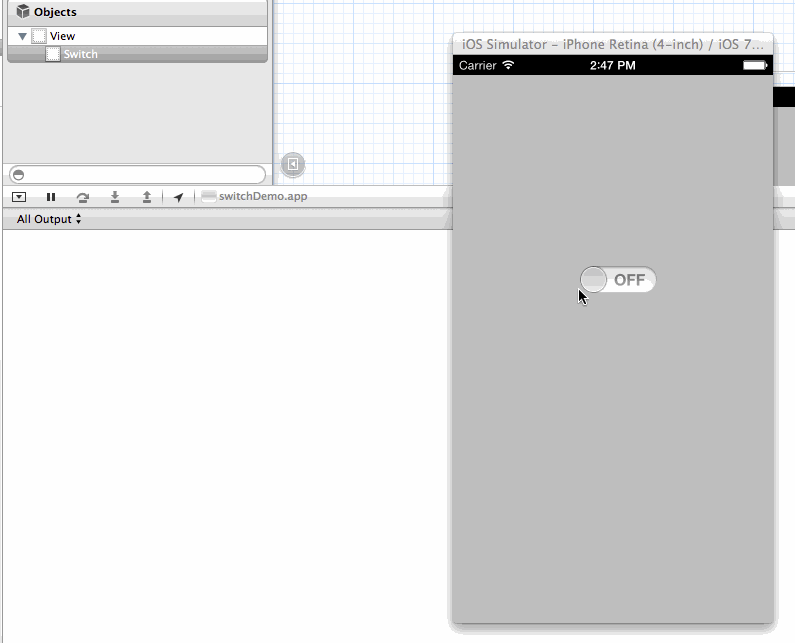如果您在应用程序中使用了这么多开关,那么在定义 UISwitch 的 t 操作方法的所有位置更改代码都会出现问题。您可以进行自定义开关并仅在值更改时处理事件。
CustomSwitch.h
#import <UIKit/UIKit.h>
@interface Care4TodayCustomSwitch : UISwitch
@end
CustomSwitch.m
@interface CustomSwitch(){
BOOL previousValue;
}
@end
@implementation CustomSwitch
- (id)initWithFrame:(CGRect)frame
{
self = [super initWithFrame:frame];
if (self) {
// Initialization code
previousValue = self.isOn;
}
return self;
}
-(void)awakeFromNib{
[super awakeFromNib];
previousValue = self.isOn;
self.exclusiveTouch = YES;
}
- (void)setOn:(BOOL)on animated:(BOOL)animated{
[super setOn:on animated:animated];
previousValue = on;
}
-(void)sendAction:(SEL)action to:(id)target forEvent:(UIEvent *)event{
if(previousValue != self.isOn){
for (id targetForEvent in [self allTargets]) {
for (id actionForEvent in [self actionsForTarget:targetForEvent forControlEvent:UIControlEventValueChanged]) {
[super sendAction:NSSelectorFromString(actionForEvent) to:targetForEvent forEvent:event];
}
}
previousValue = self.isOn;
}
}
@end
如果值与更改的值相同,我们将忽略事件。将 CustomSwitch 放在情节提要中 UISwitch 的所有类中。这将解决问题并在值更改时仅调用一次目标

